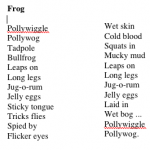 Claudette Colvin, in 1955, was a 15-year-old African American girl growing up in Alabama. She refused to surrender her seat to a white passenger on a segregated bus in Montgomery, Alabama a full nine months before Rosa Parks later became famous by doing the same thing.
Claudette Colvin, in 1955, was a 15-year-old African American girl growing up in Alabama. She refused to surrender her seat to a white passenger on a segregated bus in Montgomery, Alabama a full nine months before Rosa Parks later became famous by doing the same thing.
Phil Hoose on history in the making
 Claudette Colvin, in 1955, was a 15-year-old African American girl growing up in Alabama. She refused to surrender her seat to a white passenger on a segregated bus in Montgomery, Alabama a full nine months before Rosa Parks later became famous by doing the same thing.
Claudette Colvin, in 1955, was a 15-year-old African American girl growing up in Alabama. She refused to surrender her seat to a white passenger on a segregated bus in Montgomery, Alabama a full nine months before Rosa Parks later became famous by doing the same thing.


 Why memorize poetry? For the sheer joy of it! If there is a poem you love, nothing is more satisfying than committing it to memory. You’ll get to know the work far more deeply when you have read it aloud a number of times and familiarized yourself with its rhymes, rhythms, and repetitions as part of a living composition.
Why memorize poetry? For the sheer joy of it! If there is a poem you love, nothing is more satisfying than committing it to memory. You’ll get to know the work far more deeply when you have read it aloud a number of times and familiarized yourself with its rhymes, rhythms, and repetitions as part of a living composition. The reason I write about sports, women's history, and women's sports history, is that I grew up loving sports. I graduated from high school the week before Title IX was passed, so I didn't have opportunities to play in school, like girls do today. I played at camp, on the street, and with my father and my brother.
The reason I write about sports, women's history, and women's sports history, is that I grew up loving sports. I graduated from high school the week before Title IX was passed, so I didn't have opportunities to play in school, like girls do today. I played at camp, on the street, and with my father and my brother.